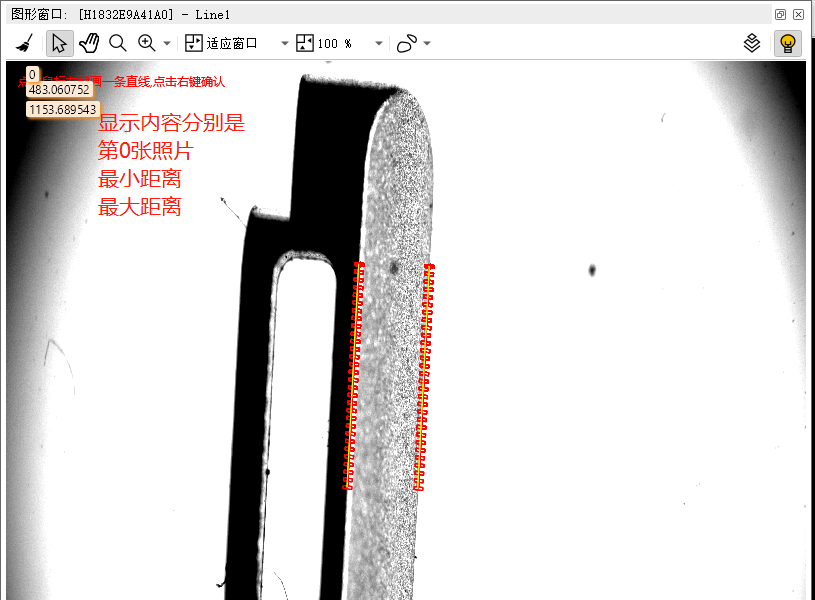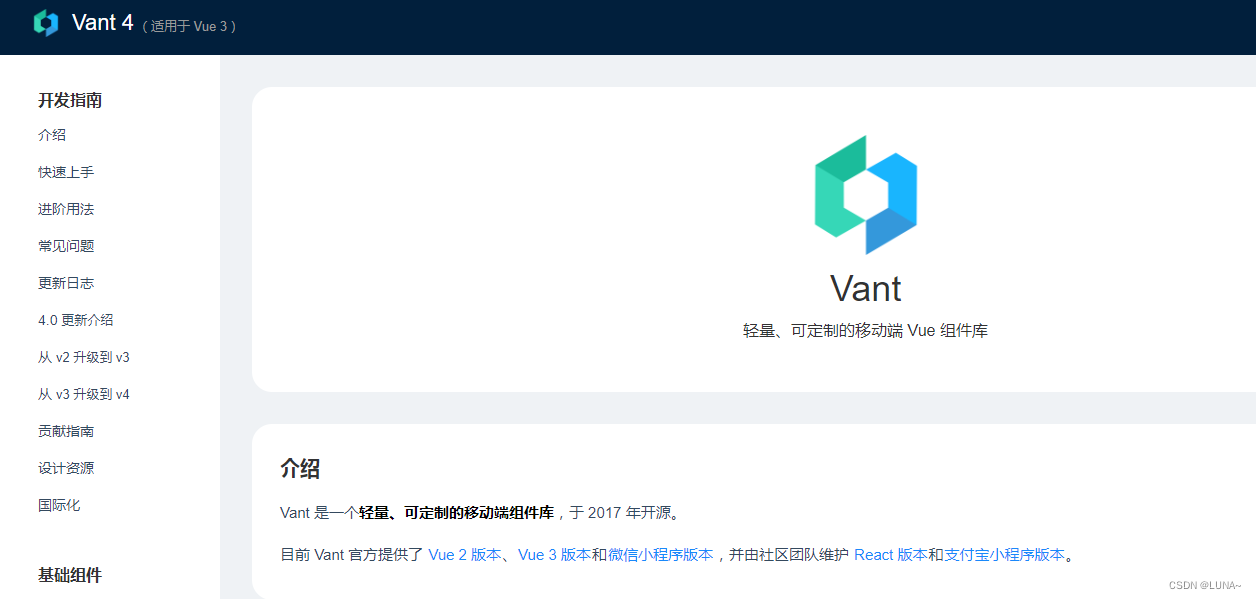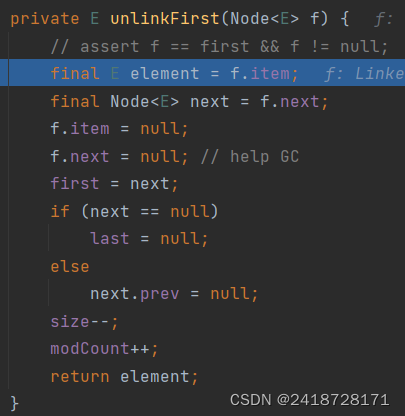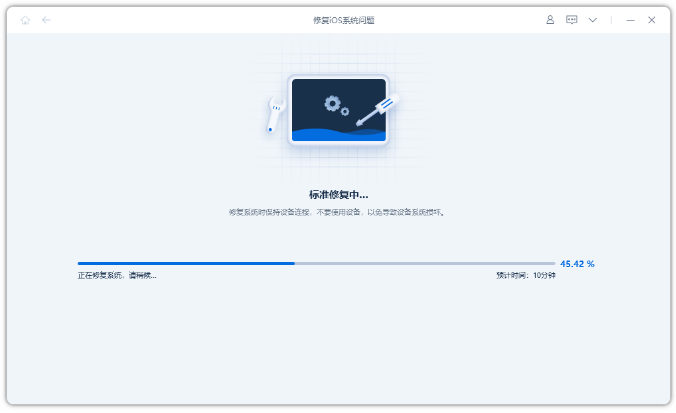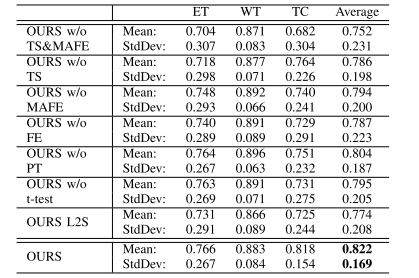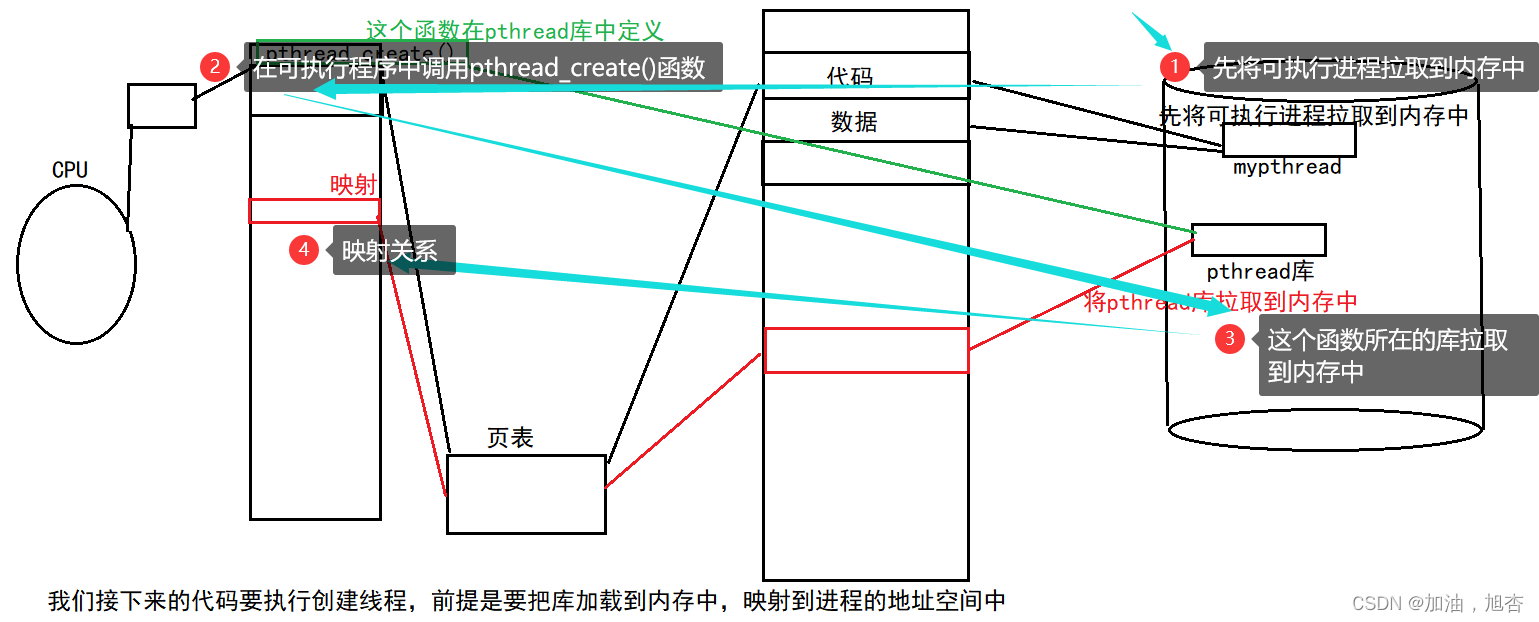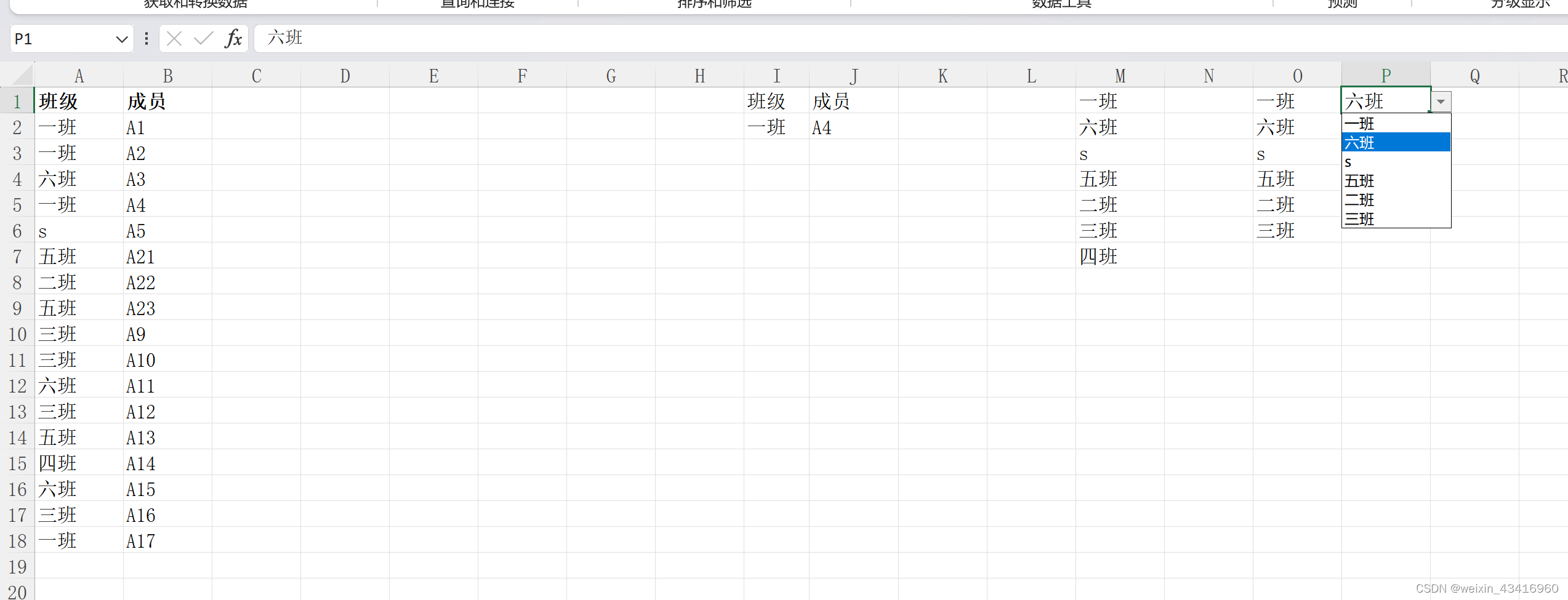目录
一、线性回归
1.模型示例
2.代码实验(C1_W1_Lab03_Model_Representation)
(1).工具使用
(2).问题描述-房价预测
(3).输入数据
(4).绘制数据集坐标点
(5).建模构造函数
二、代价函数(Cost function)
1.解释一下概念
2.衡量一条直线与训练数据的拟合程度
3.代价函数实验(C1_W1_Lab04_Cost_function_Soln)
(1)引入工具包
(2)输入训练数据
(3)定义计算代价的代价函数
(4)绘制代价函数图
(5)总结
在本实验中,你将了解线性回归模型如何在代码中定义,并通过图表观察模型对给定w和b值的数据拟合程度。此外,你还可以尝试不同的w和b值,以检验是否能提升数据拟合效果。
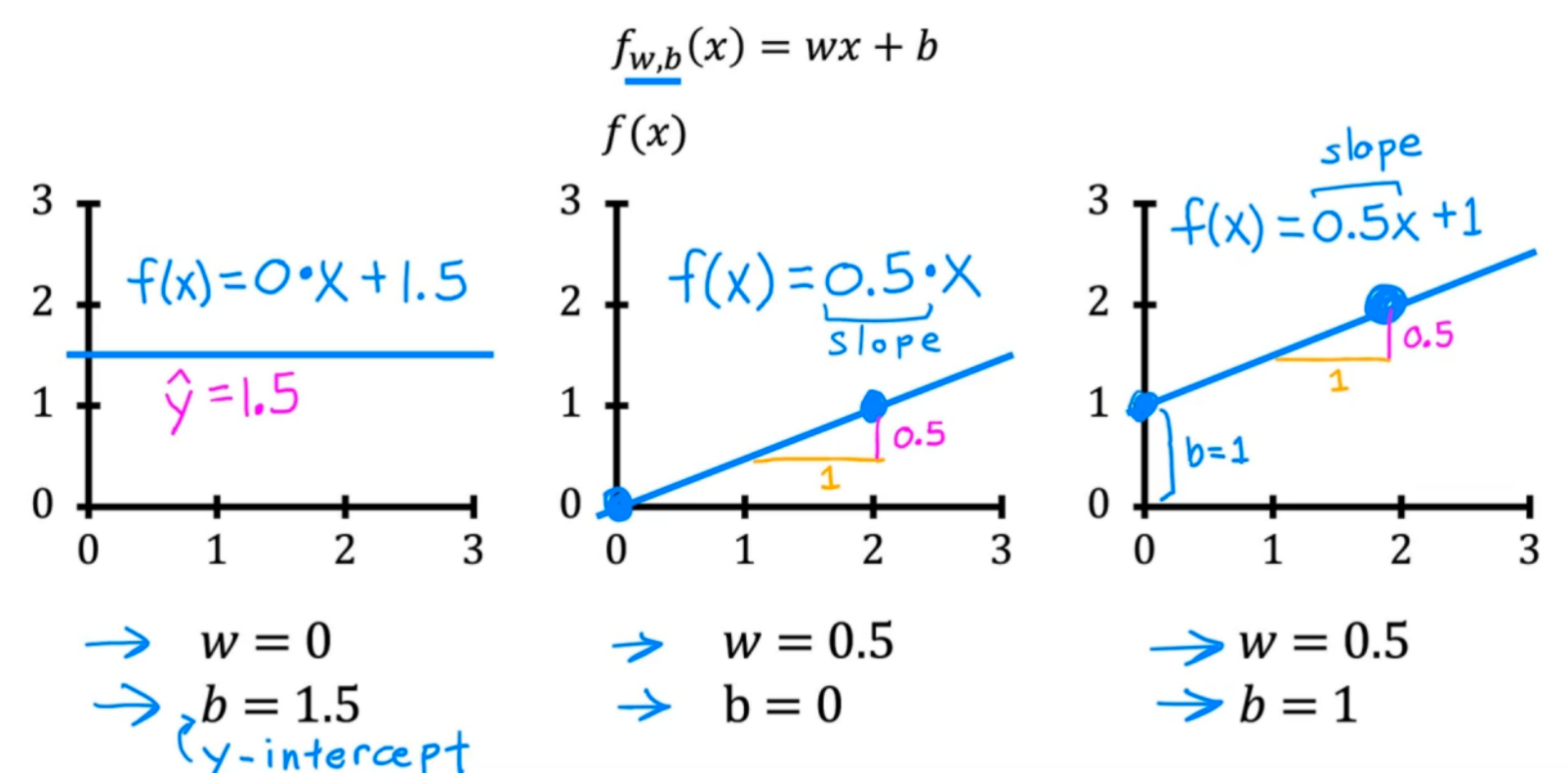
一、线性回归
1.模型示例
首先要有一些数据来训练我们的线性回归函数。
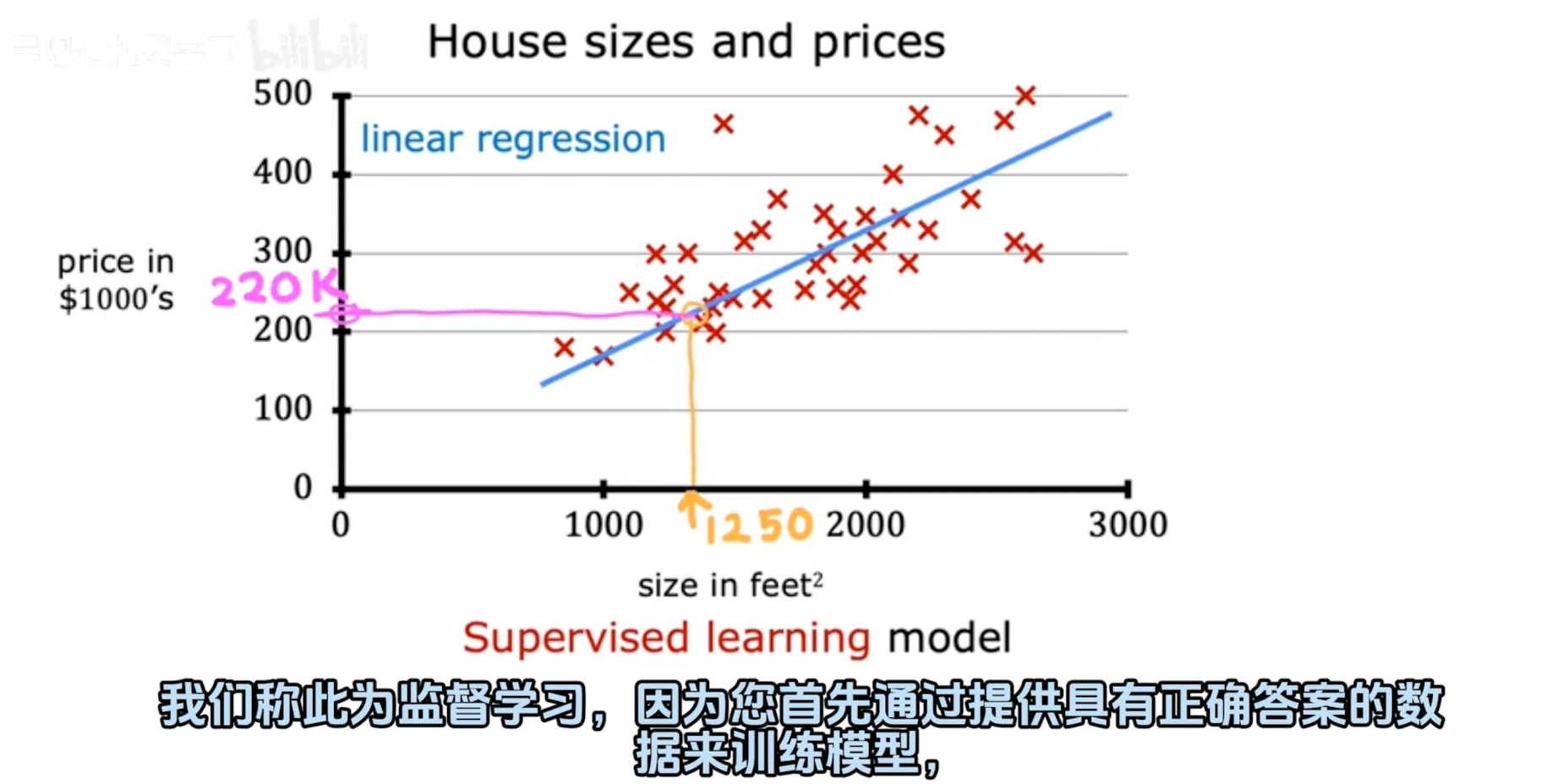
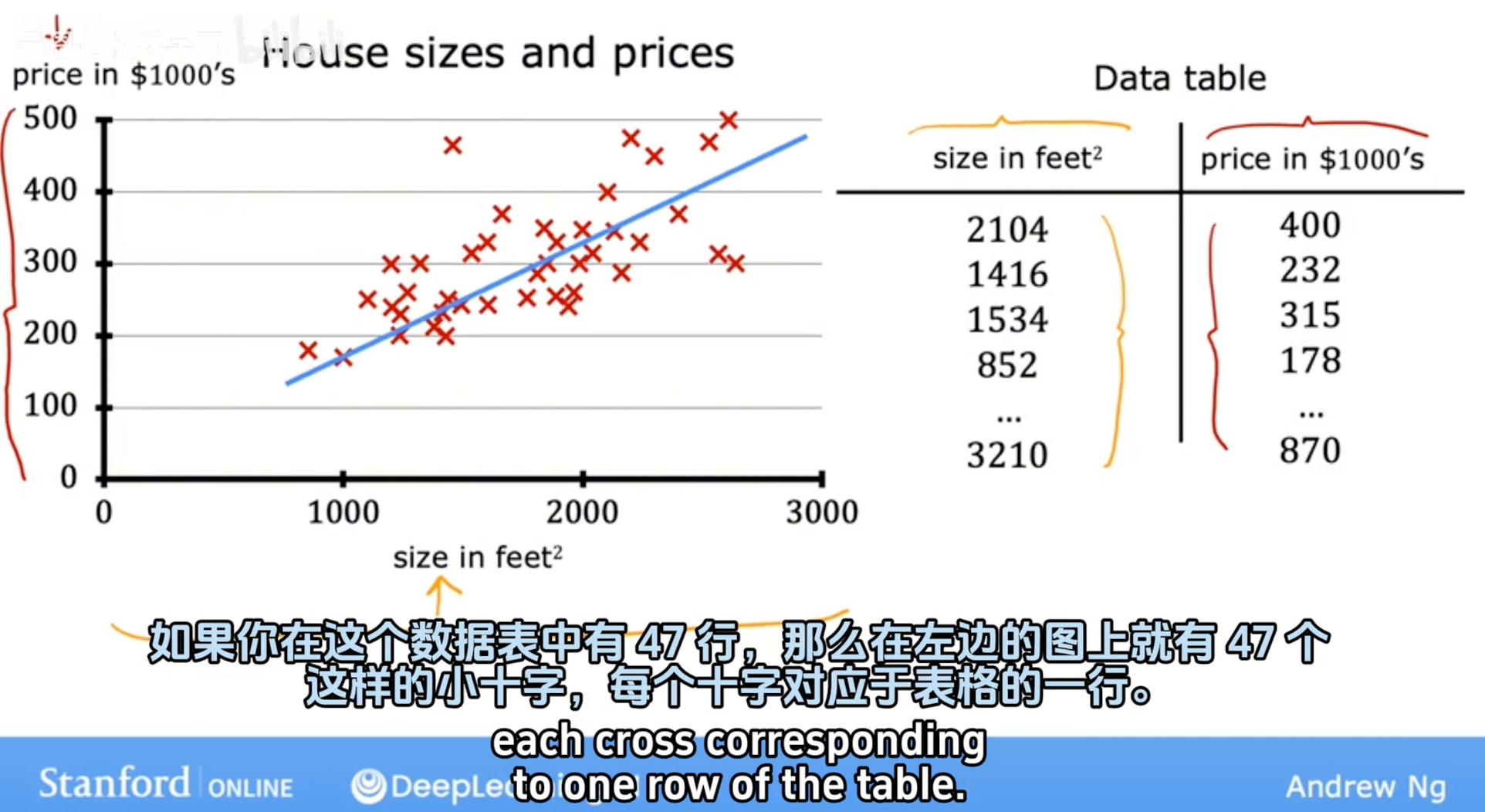
数据集:根据下面的数据集,经过一定的学习算法得到线性回归函数

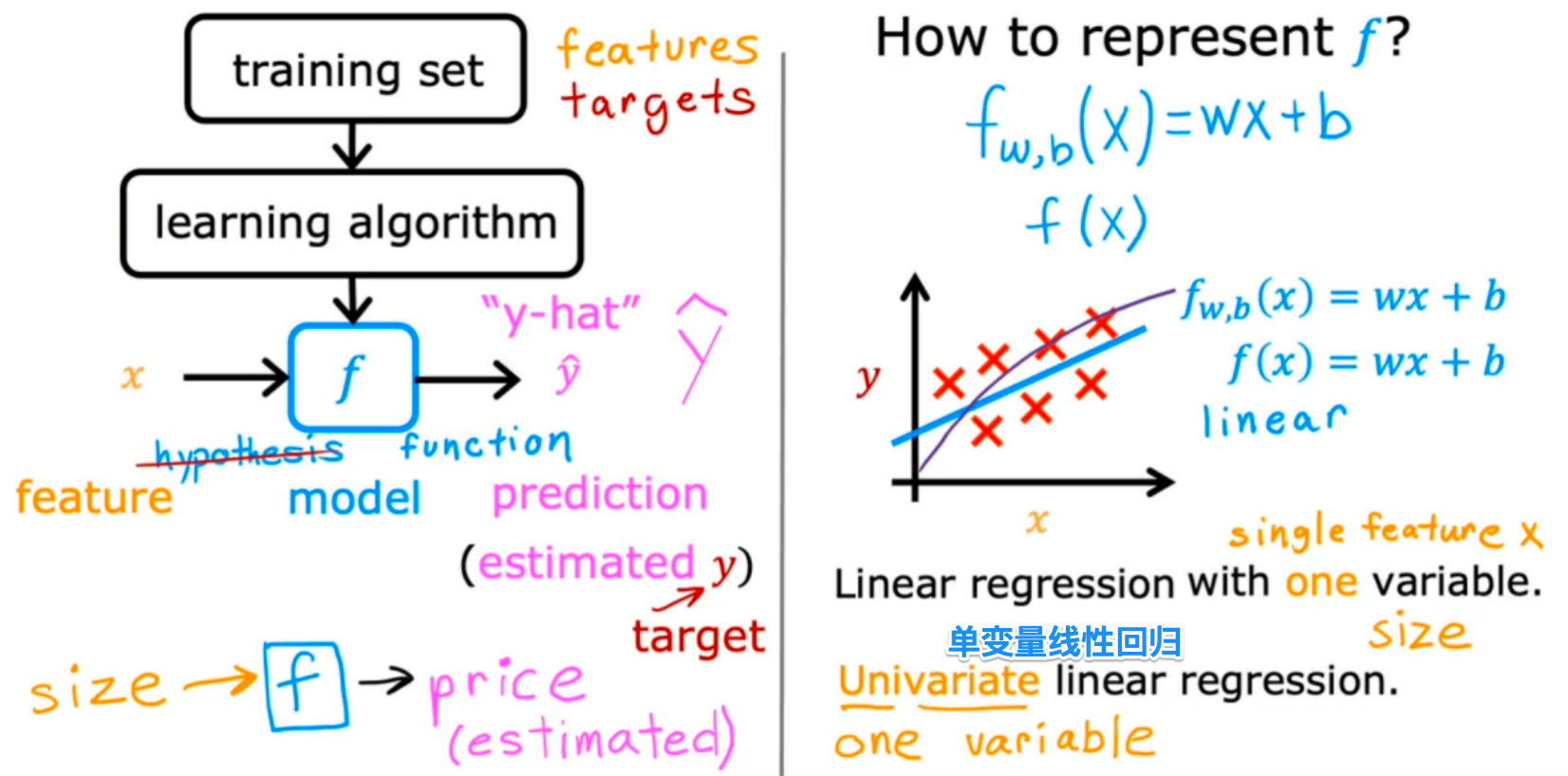
2.代码实验(C1_W1_Lab03_Model_Representation)
(1).工具使用
numpy:用于科学计算的库
matplotlib:绘制图像的库
//引入工具
import numpy as np
import matplotlib.pyplot as plt
plt.style.use('./deeplearning.mplstyle')(2).问题描述-房价预测
这个实验将使用一个只有两个数据点的简单数据集——1000平方英尺的房子以30万美元的价格出售,2000平方英尺的房子以50万美元的价格出售。这两点将构成我们的数据集或训练集。在这个实验里,尺寸的单位是1000平方英尺,价格的单位是1000美元。

(3).输入数据
# x_train is the input variable (size in 1000 square feet)
# y_train is the target (price in 1000s of dollars)
x_train = np.array([1.0, 2.0])
y_train = np.array([300.0, 500.0])
print(f"x_train = {x_train}")
print(f"y_train = {y_train}")用 m 表示训练样本的数量。Numpy数组有一个 .shape 参数。x_train.shape返回一个python元组,每个元组对应一个维度。x_train.shape[0]是数组的长度和示例的数量,如下代码:
# m is the number of training examples
print(f"x_train.shape: {x_train.shape}")
m = x_train.shape[0]
print(f"Number of training examples is: {m}")(4).绘制数据集坐标点
# Plot the data points
plt.scatter(x_train, y_train, marker='x', c='r')
# Set the title
plt.title("Housing Prices")
# Set the y-axis label
plt.ylabel('Price (in 1000s of dollars)')
# Set the x-axis label
plt.xlabel('Size (1000 sqft)')
plt.show()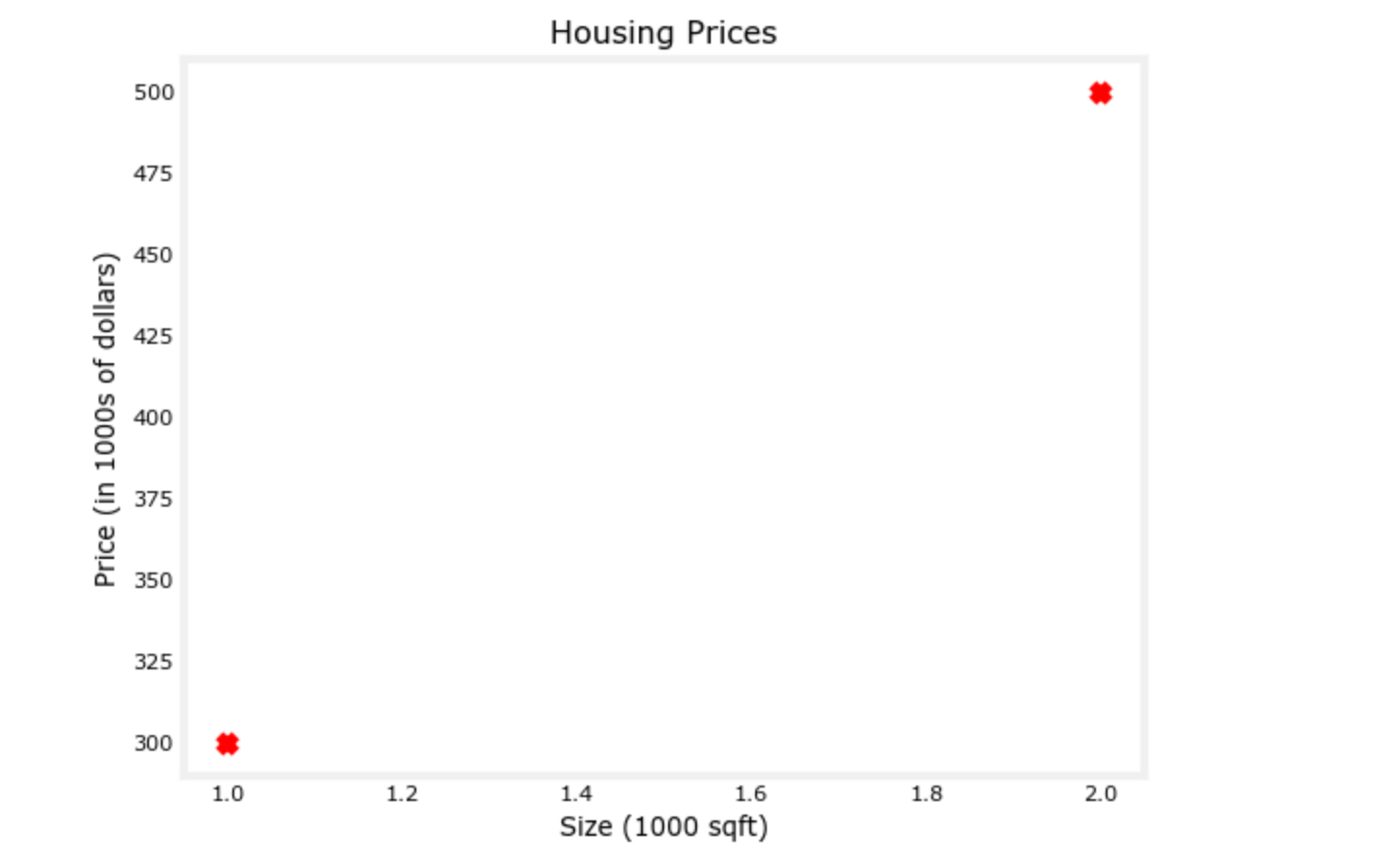
(5).建模构造函数
由问题描述可知该数据集应该是线性模型,f(x)=wx+b
不断的调整w、b,将x代入上式中,判断f(x)是否匹配数据集的y:
//批量计算在当前w、b下f(x)的值
def compute_model_output(x, w, b):
"""
Computes the prediction of a linear model
Args:
x (ndarray (m,)): Data, m examples
w,b (scalar) : model parameters
Returns
y (ndarray (m,)): target values
"""
m = x.shape[0]
f_wb = np.zeros(m)
for i in range(m):
f_wb[i] = w * x[i] + b
return f_wb可以通过画图的方式直观比较:
tmp_f_wb = compute_model_output(x_train, w, b,)
# Plot our model prediction
plt.plot(x_train, tmp_f_wb, c='b',label='Our Prediction')
# Plot the data points
plt.scatter(x_train, y_train, marker='x', c='r',label='Actual Values')
# Set the title
plt.title("Housing Prices")
# Set the y-axis label
plt.ylabel('Price (in 1000s of dollars)')
# Set the x-axis label
plt.xlabel('Size (1000 sqft)')
plt.legend()
plt.show()下图是当w=200,b=100时的图像
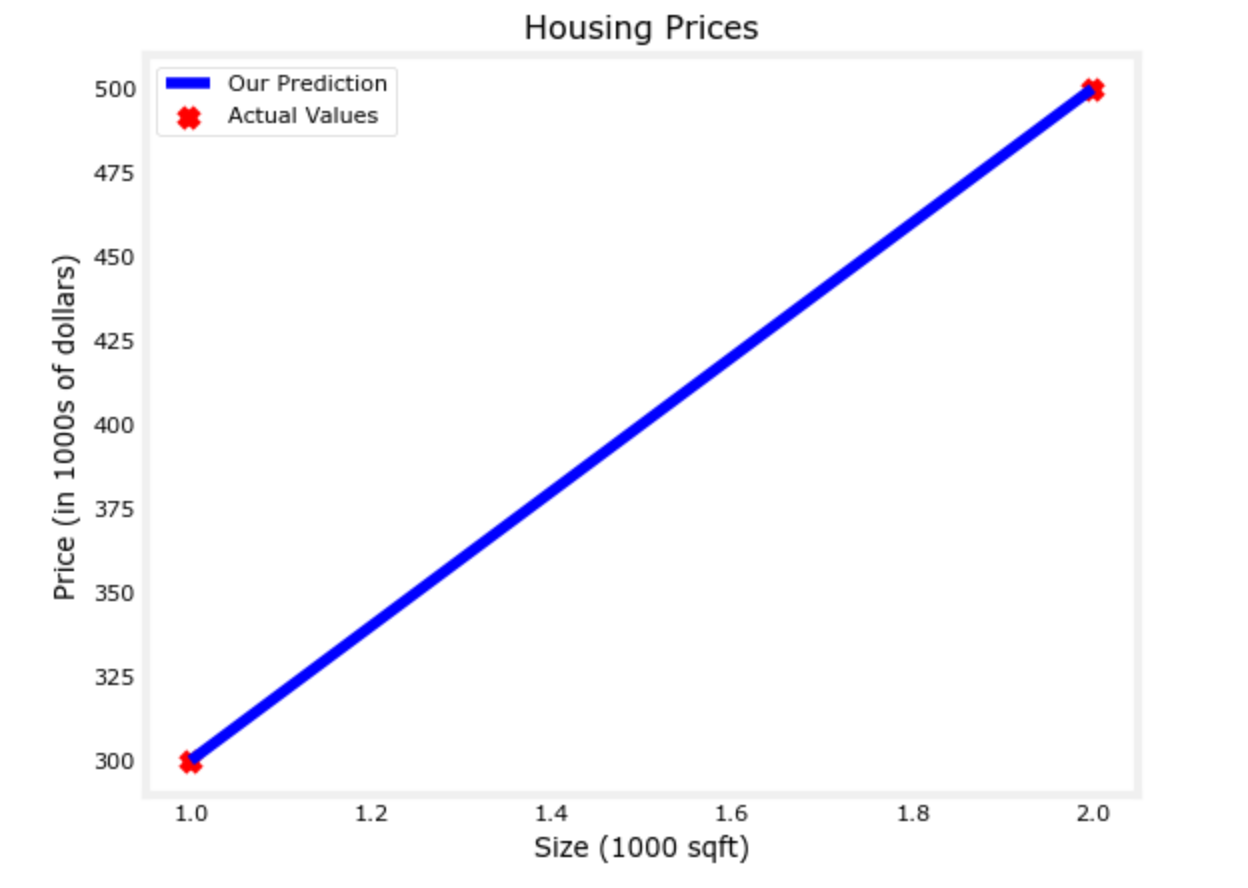
两个数据点均在f(x)=200x+100这条直线上,可以以此来对 新的x 做出预测:
w = 200
b = 100
x_i = 1.2
cost_1200sqft = w * x_i + b
print(f"${cost_1200sqft:.0f} thousand dollars”)
//输出结果:$340 thousand dollars二、代价函数(Cost function)
1.解释一下概念
在机器学习特别是监督学习中,代价函数(Cost Function)是一个关键的概念。它衡量了模型预测结果与实际标签之间的差异或误差。目标是通过优化代价函数来找到最佳的模型参数。
常见的代价函数有:(这里只是先举出例子了解一下,具体应用后面再说)
(1). 均方误差(Mean Squared Error, MSE):适用于回归问题,计算每个样本预测值和真实值之差的平方的平均。
(2). 交叉熵损失(Cross-Entropy Loss, CEL):用于分类问题,特别是多类别的softmax分类。它衡量了模型预测的概率分布与实际标签概率分布之间的差异。
(3). Huber 损失(Huber Loss):介于均方误差和绝对值误差之间,对于异常值更加鲁棒。
在优化过程中,我们会不断地调整模型参数来减小代价函数的值。通过最小化代价函数,我们期望找到一个能够在新数据上表现良好的模型。
2.衡量一条直线与训练数据的拟合程度
使用均方误差成本函数
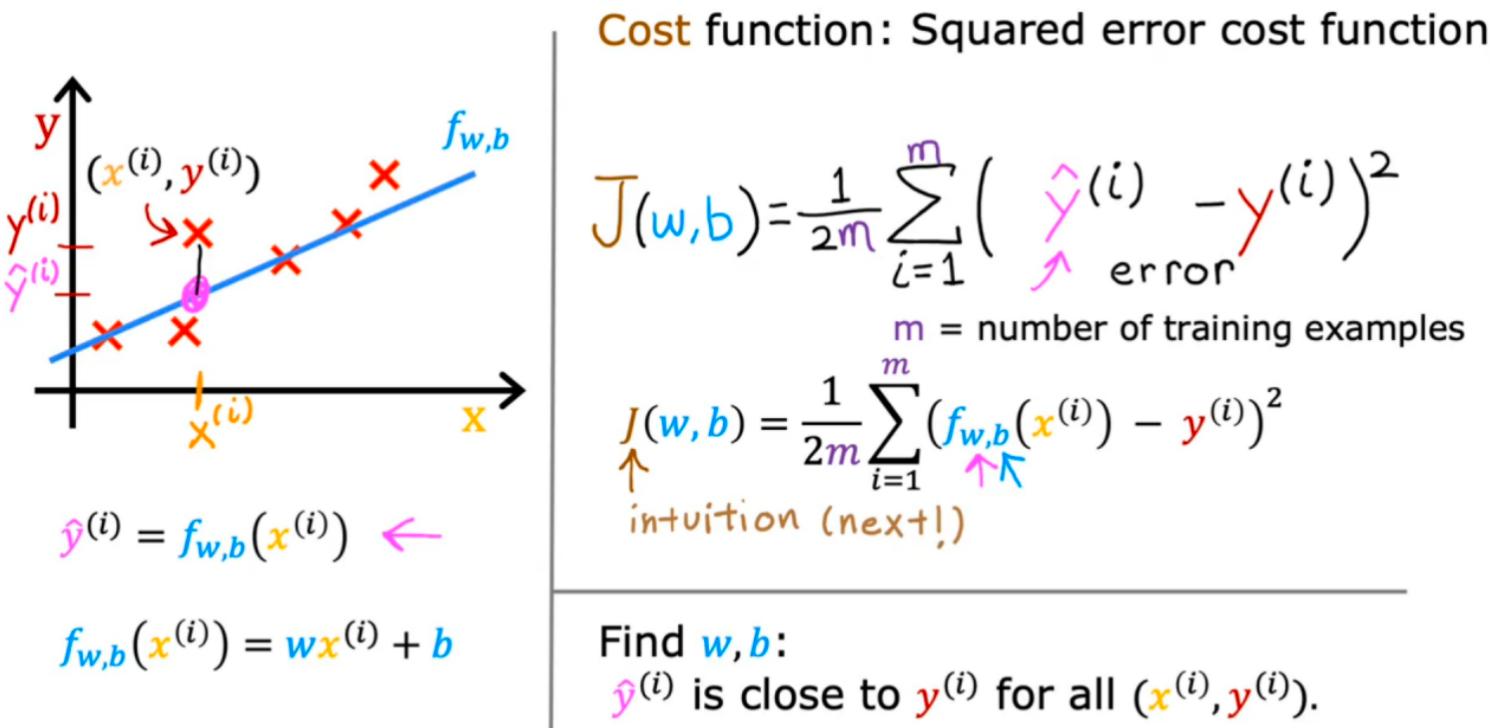
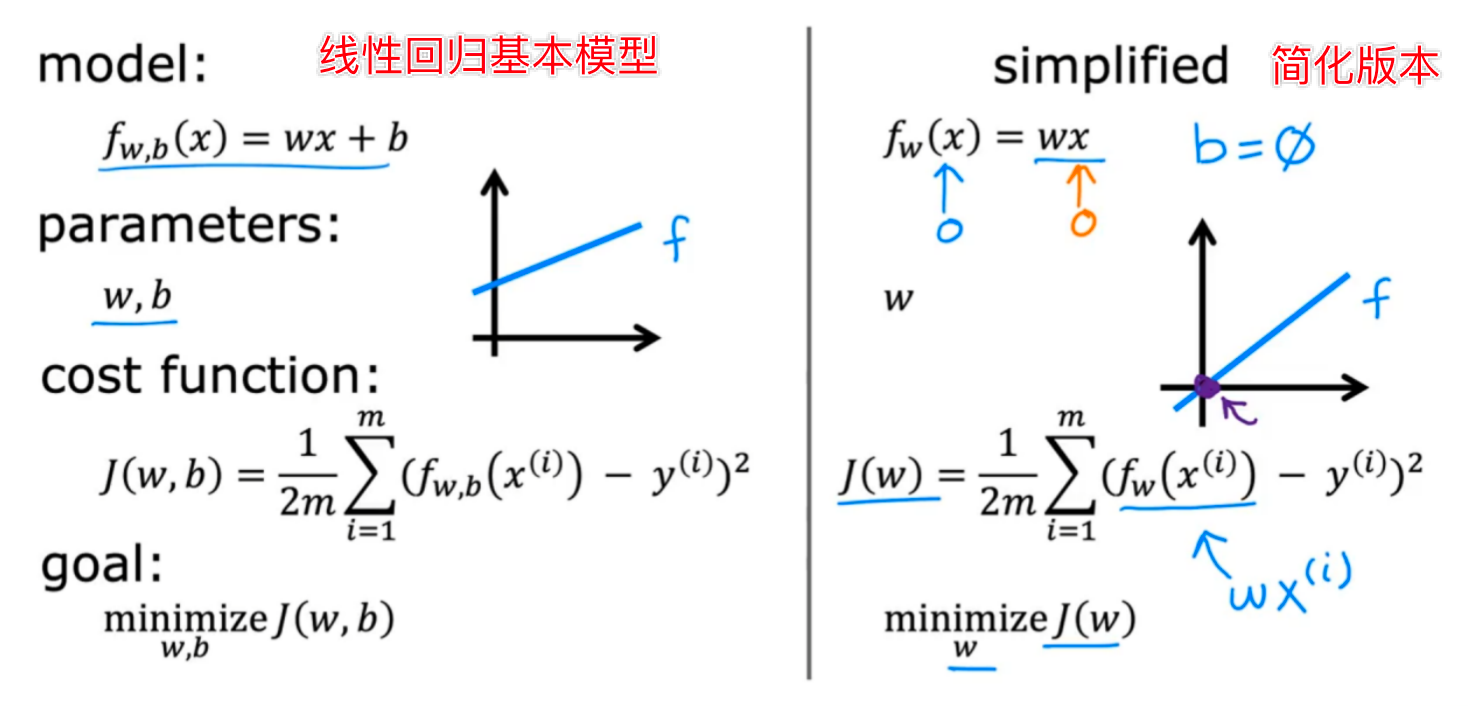
(1)先对简化版本的代价函数(b=0)进行分析:
对于不同的w(斜率)有不同的J(w),选择最小的J(w)时的w即为最优的线性回归模型参数,图示如下
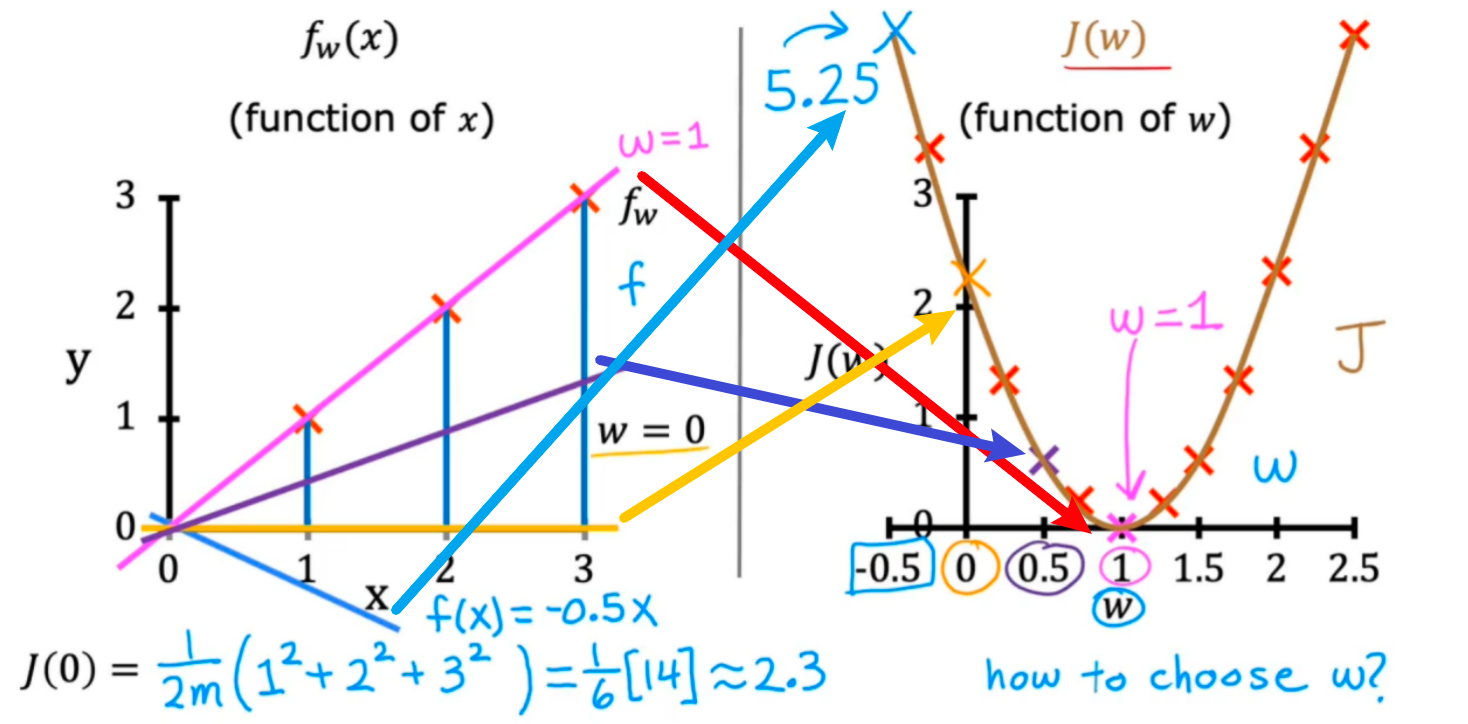
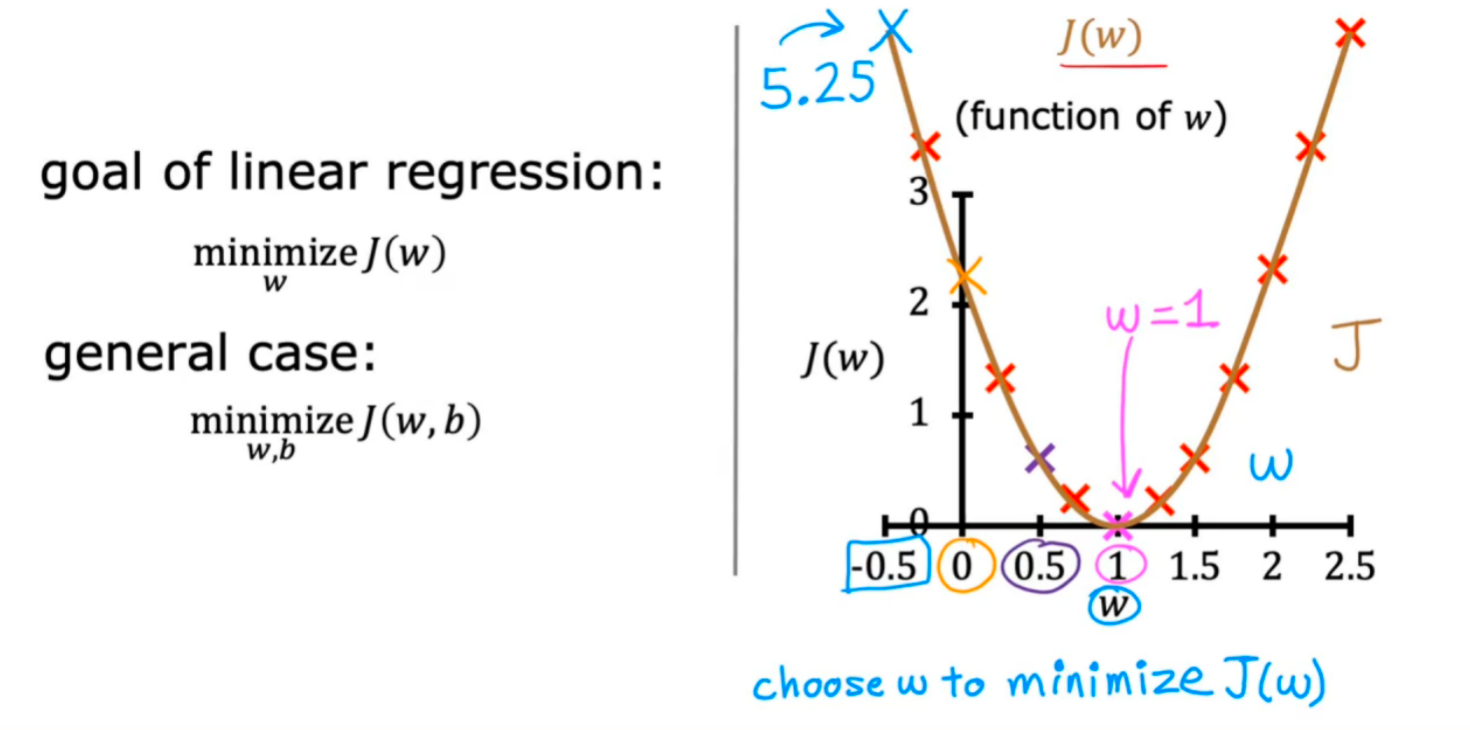
因此,构造线性回归模型的问题就变成了寻找让误差最小的w和b参数

(2)当扩展到一般的回归模型,cost function的图像变成了一个曲面( 三维坐标:w、b、J(w,b) )
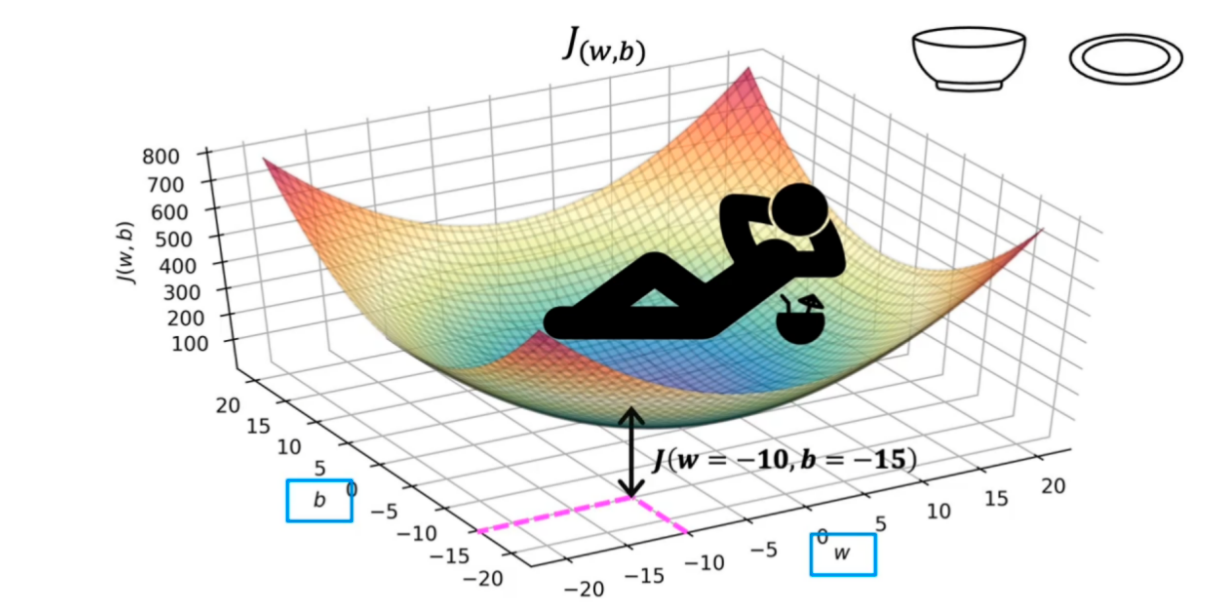
我们同样可以通过数学方法在曲面上找到使代价值J(w,b)最小的参数w和b
往往3D的曲面图会用2D的等高线图来等价表示,用于研究规律:

对于不同w、b时,f(x)和J(w,b)的图像对应情况:

3.代价函数实验(C1_W1_Lab04_Cost_function_Soln)
(1)引入工具包
import numpy as np
%matplotlib widget
import matplotlib.pyplot as plt
from lab_utils_uni import plt_intuition, plt_stationary, plt_update_onclick, soup_bowl
plt.style.use('./deeplearning.mplstyle')发现出现缺少依赖包的情况:

pip install ipympl
重启内核继续执行引入工具包的操作
(2)输入训练数据

x_train = np.array([1.0, 2.0]) #(size in 1000 square feet)
y_train = np.array([300.0, 500.0]) #(price in 1000s of dollars)(3)定义计算代价的代价函数

def compute_cost(x, y, w, b):
"""
Computes the cost function for linear regression.
Args:
x (ndarray (m,)): Data, m examples
y (ndarray (m,)): target values
w,b (scalar) : model parameters
Returns
total_cost (float): The cost of using w,b as the parameters for linear regression
to fit the data points in x and y
"""
# number of training examples
m = x.shape[0]
cost_sum = 0
for i in range(m):
f_wb = w * x[i] + b
cost = (f_wb - y[i]) ** 2
cost_sum = cost_sum + cost
total_cost = (1 / (2 * m)) * cost_sum
return total_cost(4)绘制代价函数图
①由数据可知,拟合最好的回归模型b=100,这里先看一下固定b=100时,w变化时,J(w)的变化情况
//绘制w-J(w)变化图,函数具体原码看代码包:当前课程资源:week1/work/lab_utils_uni.py
plt_intuition(x_train,y_train)如果绘图时遇到这个问题:Failed to load model class 'VBoxModel' from module '@jupyter-widgets/controls’

需要安装 widgets 依赖:
pip install ipywidgets如果还是不好使可能是版本问题,将依赖组件升级一下
pip install -U jupyterlab ipywidgets jupyterlab_widgetsw=130时的误差:6125
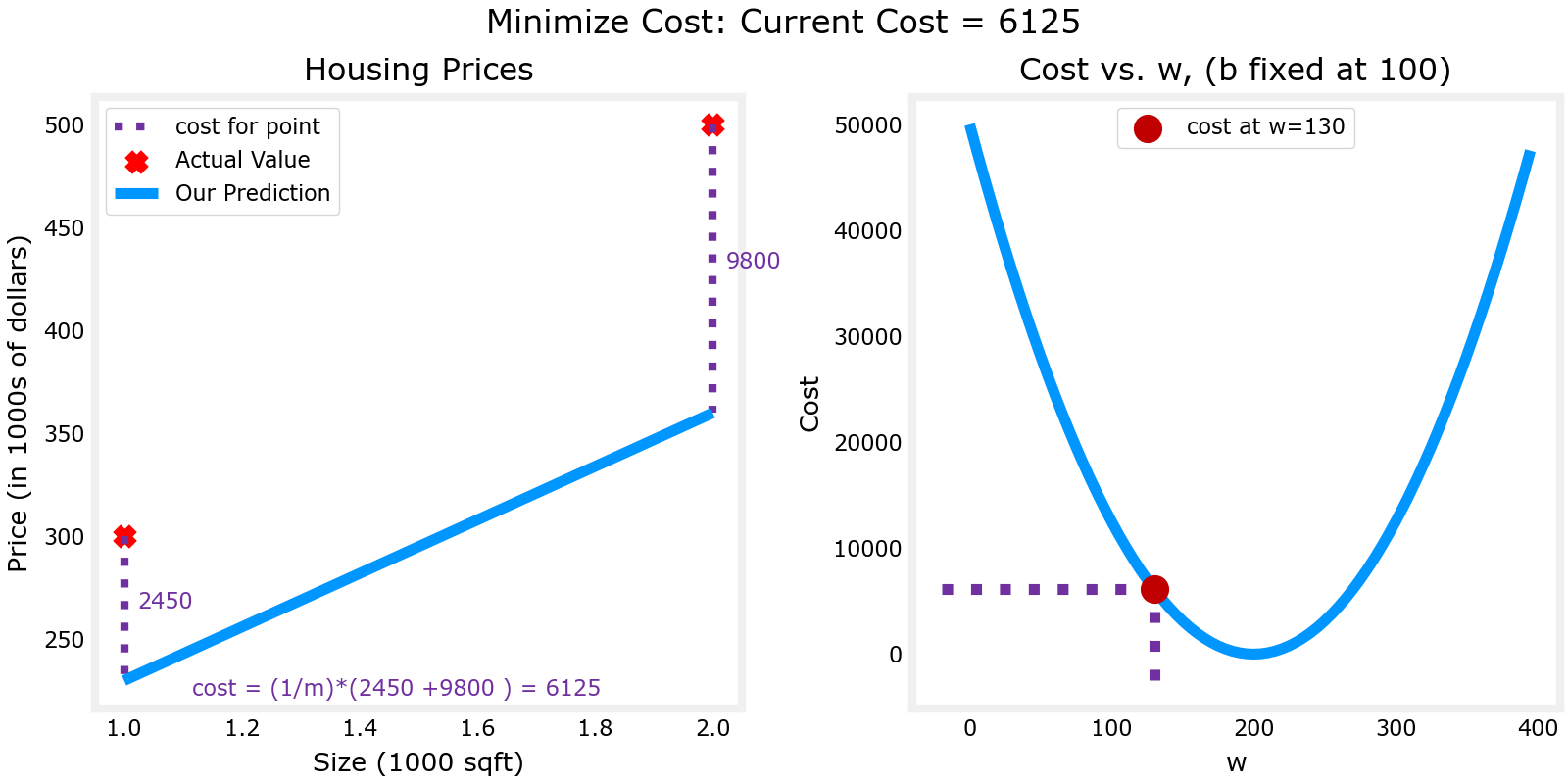
w=200时,误差为0
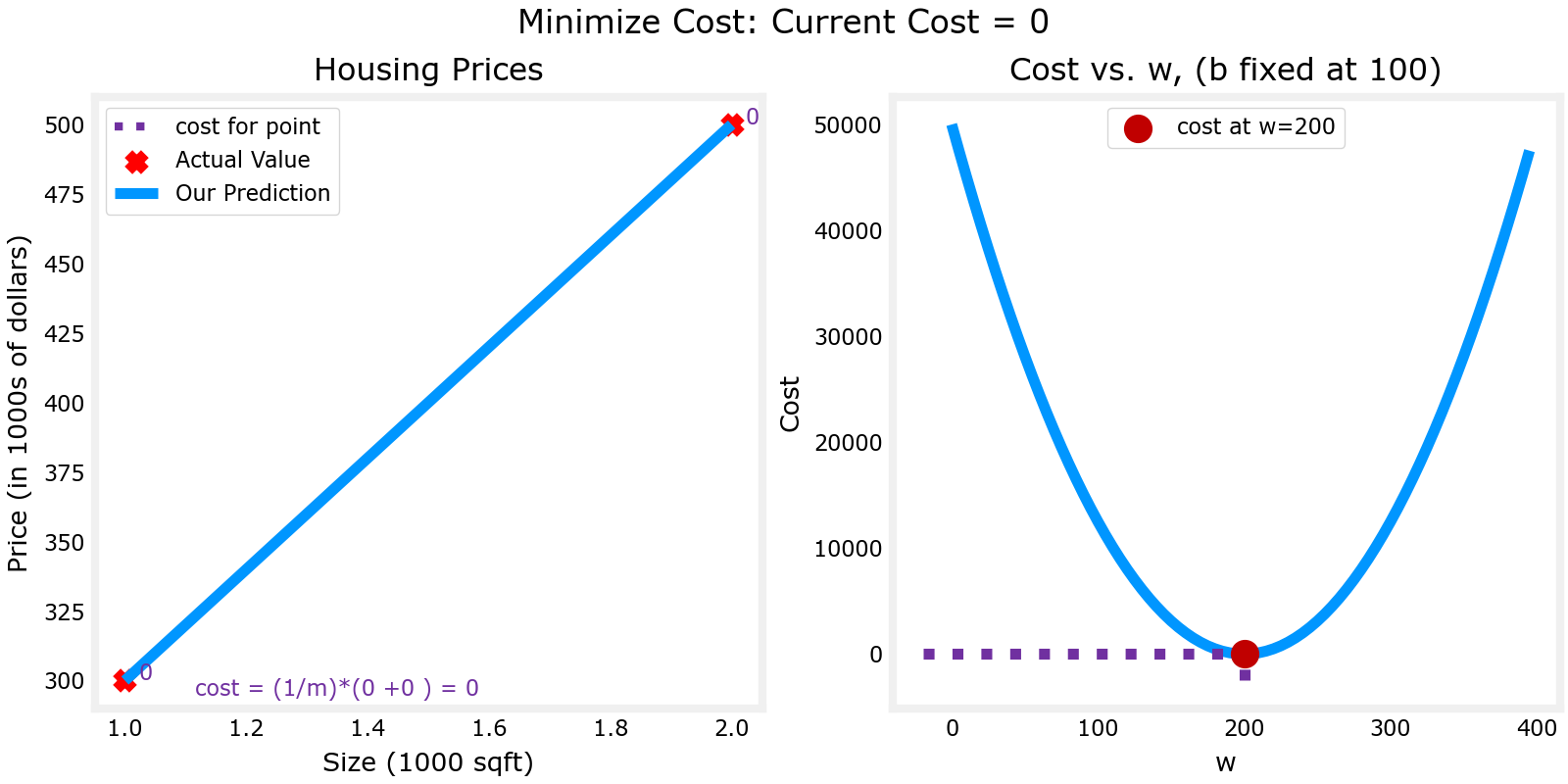
//绘图-三维图
plt.close('all')
fig, ax, dyn_items = plt_stationary(x_train, y_train)
updater = plt_update_onclick(fig, ax, x_train, y_train, dyn_items)
②对于更大规模的数据集,我们不能通过看来发现合适的w和b
所以我们使用3D的图来显示w、b、J(w,b)之间的关系:
//数据集
x_train = np.array([1.0, 1.7, 2.0, 2.5, 3.0, 3.2])
y_train = np.array([250, 300, 480, 430, 630, 730,])
//绘图
plt.close('all')
fig, ax, dyn_items = plt_stationary(x_train, y_train)
updater = plt_update_onclick(fig, ax, x_train, y_train, dyn_items)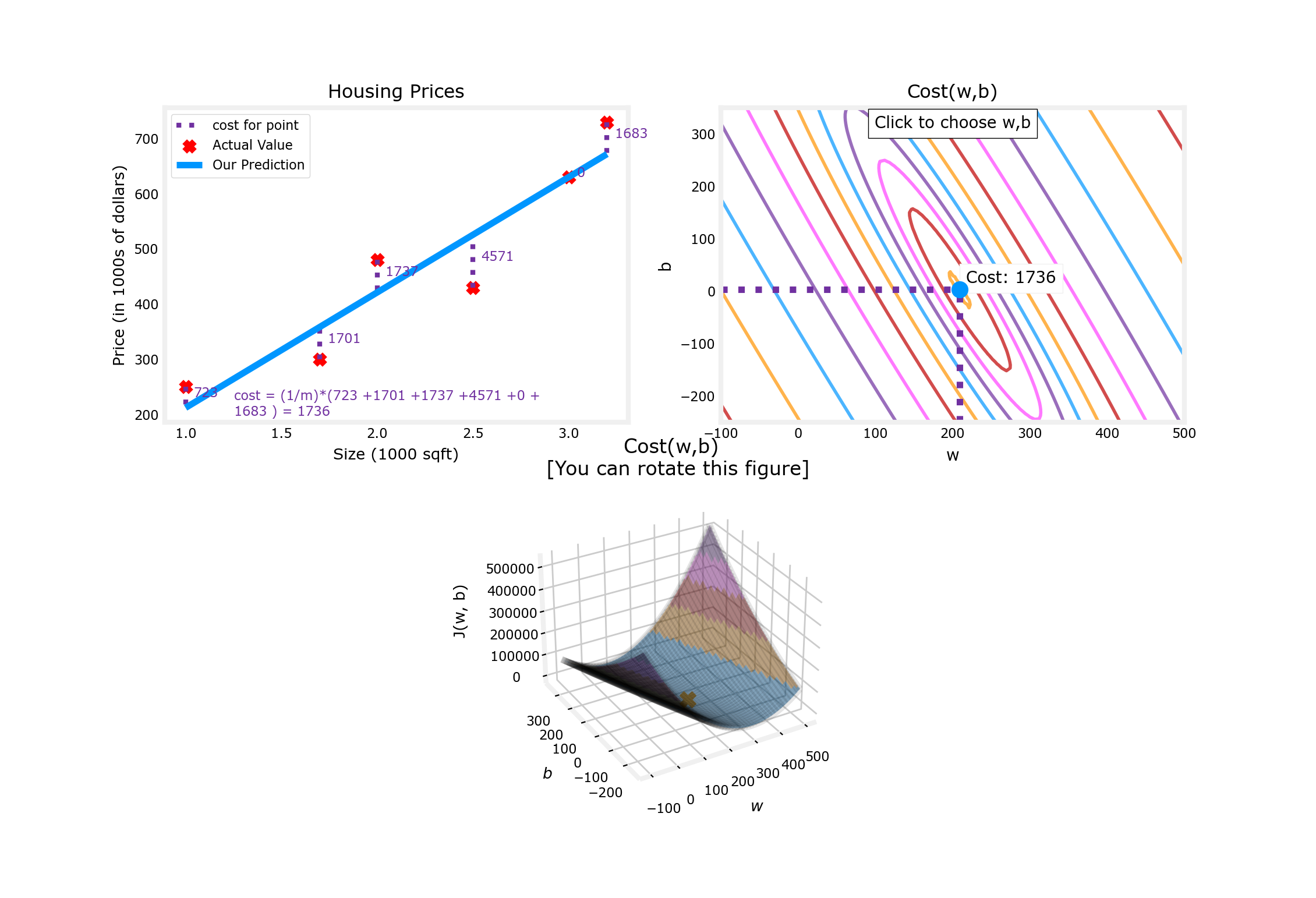
(5)总结
成本函数对损失进行平方,这一事实确保了“误差曲面”是凸的,就像一个汤碗。它总是有一个可以通过在所有维度上遵循梯度达到的最小值。
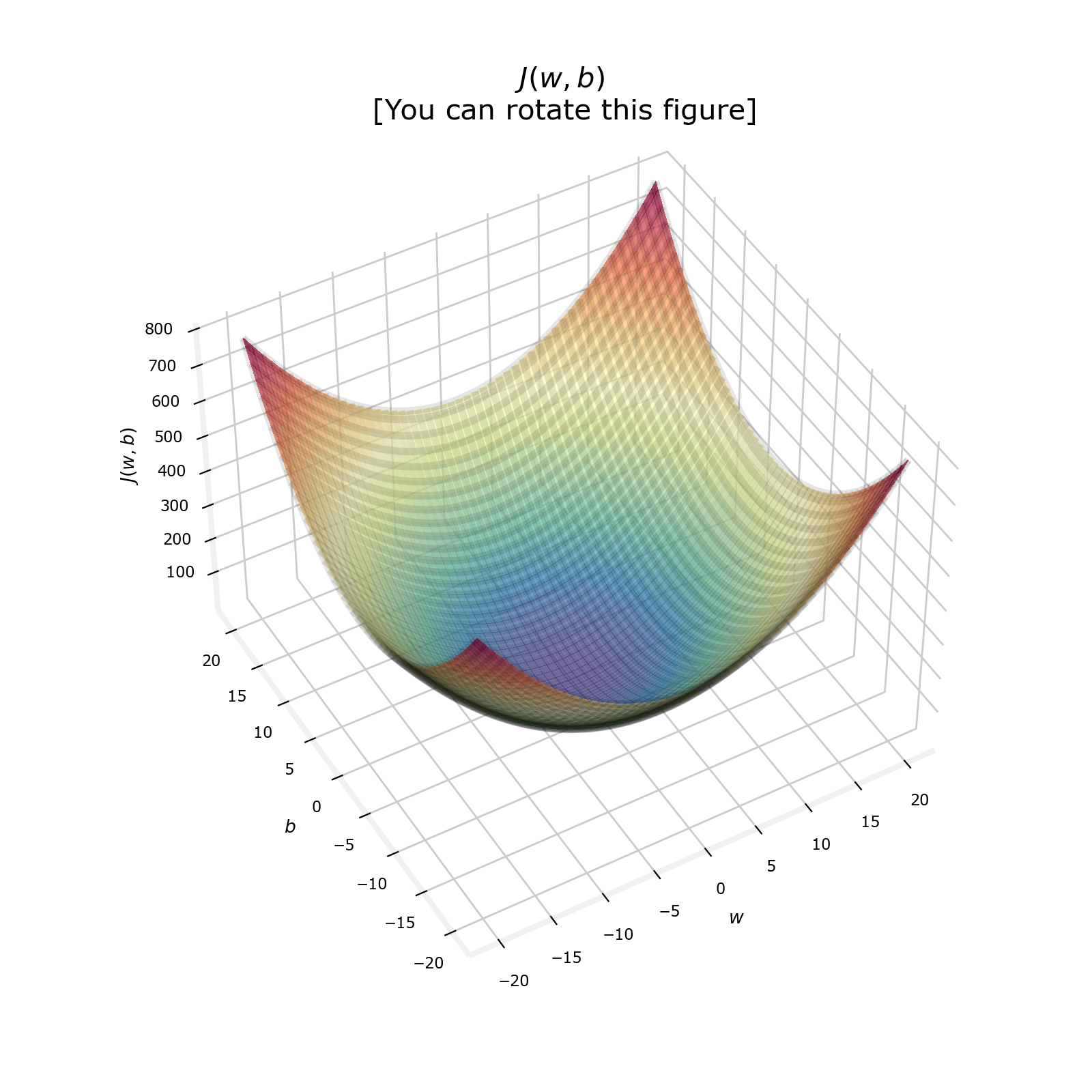
下一章将开始学习梯度下降法,可以解决寻找使J(w,b)最小的w和b。


